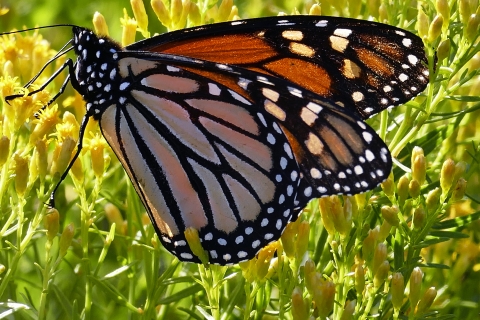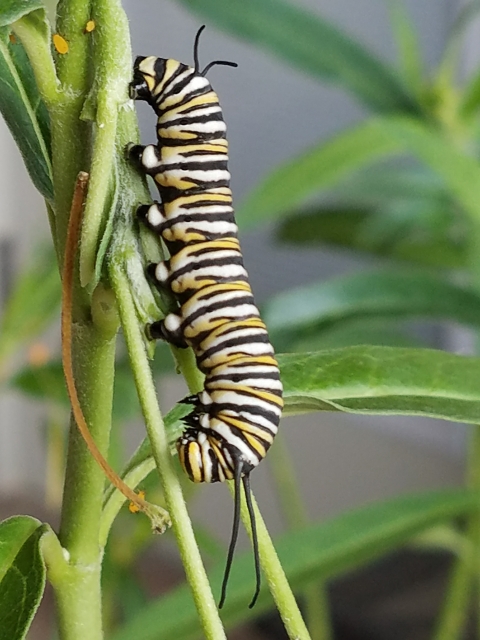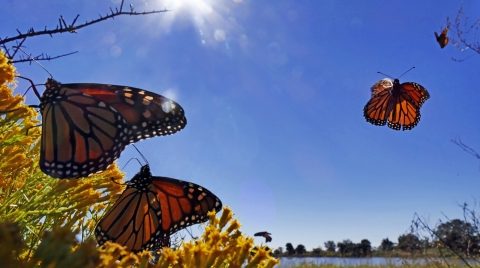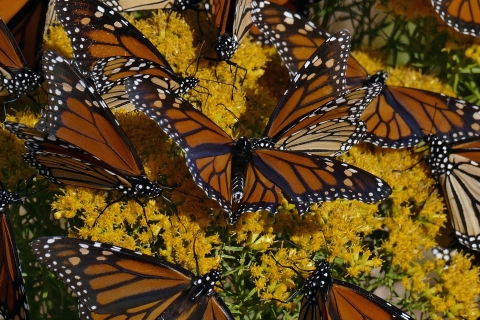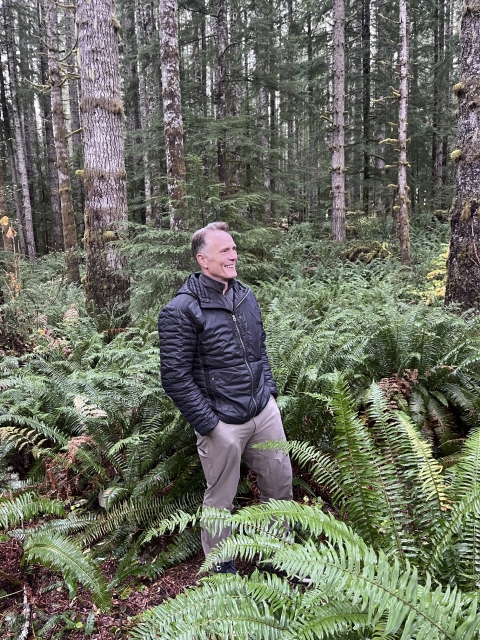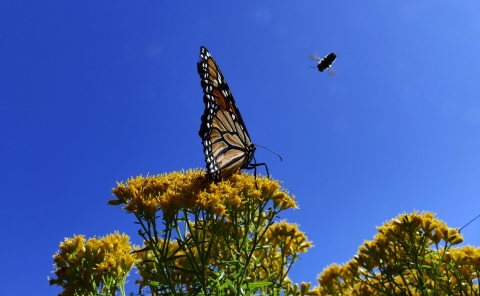Daphne, Alabama -- In the heart of a small Alabama town, locals can explore Daphne Middle School's Butterfly Garden Exhibit. Filled with stunning firewheels, yellow daisies and milkweed, Principal Kerry Edwards knew the project would be a huge success for students, teachers and nature-lovers alike.
“Pollinators and monarch butterflies are an important part of our environment and providing opportunities for our students to learn about how these incredible species play a role in our community and world is invaluable," said Edwards.
Given their significance, it’s easy to see why the butterflies are called monarchs; their large size and vibrant look give them a regal appearance. Their wings resemble majestic stained-glass windows, with bright hues of orange outlined with bold black veins and white spots.
“Seeing monarchs and other species in our school garden is a thrill—not only from a learning perspective, but also as personal achievement, as the students are not only observing these species but have had an active role in encouraging them to thrive on our campus,” said Edwards.
Some consider butterflies superheroes of the insect world, with one superpower being their ability to gracefully migrate thousands of miles.
Meg Hedeen, a biologist and pollinator expert with the U.S. Fish and Wildlife Service, says monarchs are tougher than they look; the insects embark on a trip of a lifetime with just their wings and fat stored from nectar sources.
“Encountering a monarch is akin to seeing an Olympic athlete to me,” Hedeen said. “The skills and determination it takes to accomplish these amazing things always comes to mind when a monarch flutters by.”
But even the monarch, that carries so much admiration, can face difficulties.
Monarch butterflies need a variety of habitats to breed, feed, and rest during migration. Urban development, habitat conversion, and use of pesticides and herbicides all make the journey more challenging.
Still, Hedeen is optimistic.
The Service has joined a number of partners to make a difference in the survival of the monarch.One encouraging example is our collaboration with the National Alliance of Forest Owners (NAFO), a group of major private forest owners in the U.S.
"I'm thrilled to be part of this collaboration between NAFO and FWS. Together, we are integrating practices that not only sustain and expand working forests but also support our vital pollinators," said Hedeen.
Dave Tenny, president and CEO of NAFO, says his passion for the woods started during his childhood in Idaho.
“I found myself connected to those forests,”Tenny said. “I loved the beauty and the smell of the trees, the way they shaded rivers and streams where I fished, and the wildlife I often saw, especially where the forest met the meadow.”
Tenny says wildlife conservation and forest health go hand-in-hand. That’s why he’s enthusiastic about collaborating with the Service.
“With modern forestry, we know that wildlife is the heartbeat of the forest,” said Tenny. “When wildlife populations are healthy, the heartbeat is strong and our forests are healthy.”
Tenny says NAFO’s members implement forest management regimes that can help provide safeguards for monarchs.
For starters, monarchs rely on sun-loving plants, such as milkweed, for reproduction and growth. Tenny says foresters can help sunlight reach the forest floor through thinnings that create an open canopy.
“Private forest owners manage their lands in varied ways across the landscape. When managing for forest products, they also clear sections of the forest for harvests which also allows pollinator supporting plants to get the sunlight they need,” explained Tenny.
Foresters, like those at The Westervelt Company, a company based on land stewardship, are embracing collaborative conservation efforts for pollinators in their forests.
Jonathan Lowery, Vice President of Sustainability and Government Relations for Westervelt, says the company has a long history of teaming up with researchers to better understand how wildlife uses working forests.
"We recently collaborated with the National Council for Air and Stream Improvement, the University of Georgia, and Mississippi State University to establish research sites in our forests,” said Lowery.
“We believe that working forests provide a tremendously beneficial habitat for pollinators, and through this research we will quantify just how effective these working, managed forests are at supporting such a crucial part of our ecosystem.”
The Service is stoked.
“I hope landowners, businesses, and conservation biologists continue to work together to find ways that help both businesses and families thrive while supporting monarch butterflies,” said Hedeen.
All sectors can work together, and it makes me hopeful.” Added NAFO’s Tenny, “We still have so many ideas to explore as we move ahead with the Service. One idea I’m particularly excited about is working together to develop seed mixes for roadside and construction areas that help grow plants friendly to pollinators.”
“The best is yet to come!”


